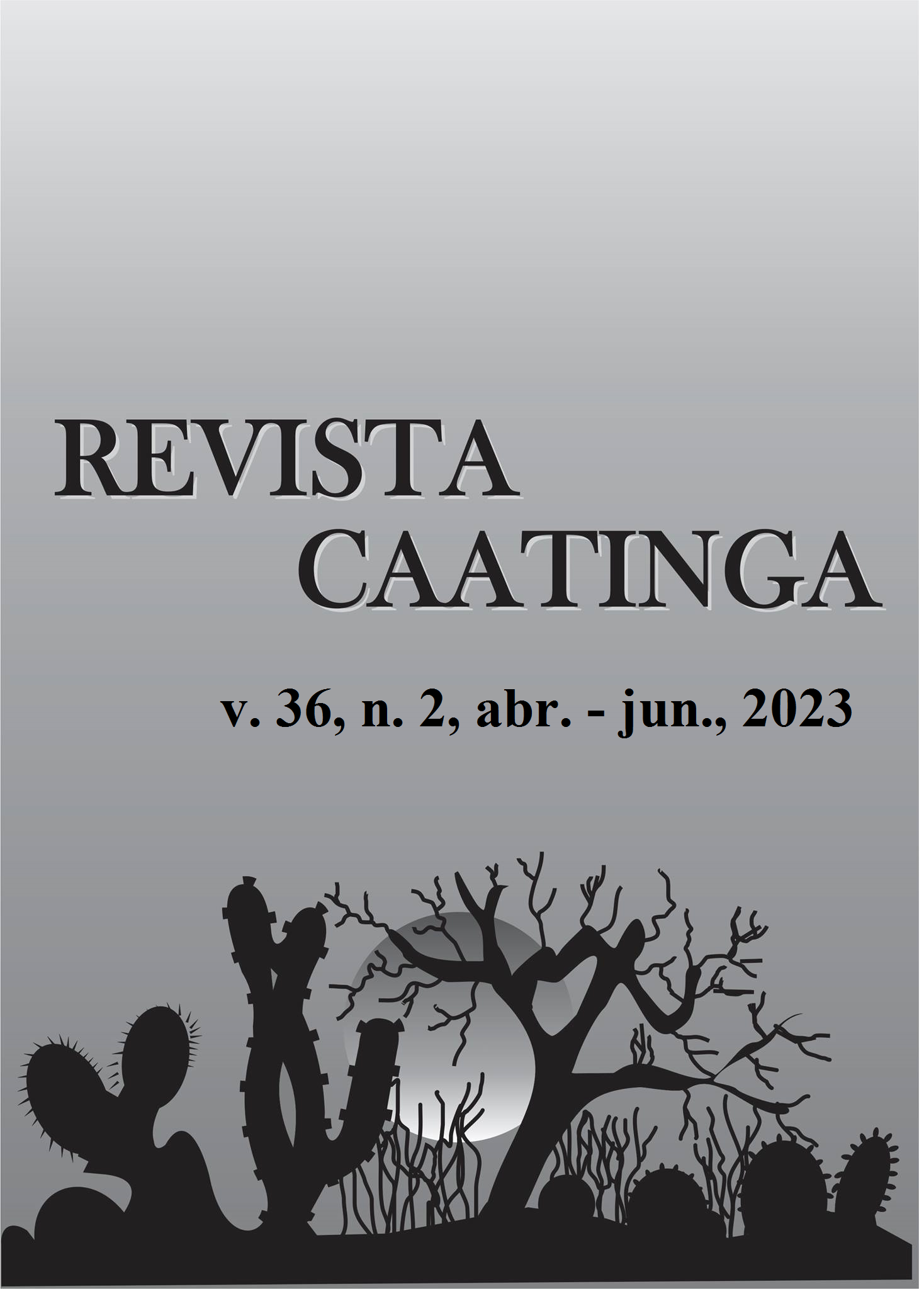Data mining for ranking sorghum seed lots
DOI:
https://doi.org/10.1590/1983-21252023v36n224rcKeywords:
Quality, Post-harvest technology, Artificial intelligence. Image processing. Seeds.Abstract
The ranking of seed lots is a fundamental process for all companies in the seed industry. This work aims to demonstrate data mining methods for ranking sorghum seed lots during the seed processing through analysis of quality control data. Germination and cold tests were performed to verify the physiological quality of the lots. Seed samples from each lot were evaluated in two moments: post-cleaning and finished product (ready for marketing). The results after pre-processing totaled 188 rows of data with six attributes, encompassing 150 lots accepted for marketing, 6 rejected, and 32 intermediate lots. The classifiers used were J48, Random Forest, Classification Via Regression, Naive Bayes, Multilayer Perceptron, and IBk. The Resample filter was used for adjustment of the data. The k-fold technique was used for training, with ten folds. The metrics of Accuracy, Precision, Recall, F-measure, and ROC Area were used to verify the accuracy of the algorithms. The results obtained were used to determine the best machine-learning algorithm. IBk and J48 presented the highest accuracy of data; the IBk technique presented the best results. The Resample filter was essential for solving the data imbalance problem. Sorghum seed lots can be classified with great accuracy and precision through artificial intelligence and machine learning technique.
Downloads
References
BENIWAL, S.; ARORA, J. Classification and feature selection techniques in data mining, International Journal of Engineering Research & Technology, 1: 1-6, 2012.
BRASIL. Ministério da Agricultura, Pecuária e Abastecimento. Regras para análise de sementes. 1. ed. Brasília, DF: MAPA, 2009. 398 p.
BRASIL. Ministério da Agricultura, Pecuária e Abastecimento. Instrução Normativa nº45 de 17 de setembro de 2013. 2013. Disponível em: <https://www.gov.br/agricultura/pt-br/assuntos/insumos-agropecuarios
/insumos-agricolas/sementes-e-mudas/publicacoes-sementes-e-mudas/ copy_of_INN45de17desetembrode2013.pdf>. Acesso em: 22 out. 2021.
CAÑIZARES, L. C. C. et al. Tecnologia e industrialização de grãos de canola, girassol, linhaça, algodão, amendoim, sorgo, milho pipoca, lentilha e ervilha. In: FERREIRA, C. D.; OLIVEIRA, M. de; ZIEGLER, V. (Eds.). Tecnologia industrial de grãos e derivados. 1 ed. Curitiba, PR: Editora CRV, 2020. v. 1, cap. 9, p. 225-276.
CARVALHO, N. M.; NAKAGAWA, J. Sementes: ciência, tecnologia e produção. 5. ed. Jaboticabal, SP: Funep, 2012. 590 p.
GADOTTI, G. I. et al. Aprendizado de máquina para classificação de lotes de sementes de soja. Engenharia Agrícola, 42: e20210101, 2022a.
GADOTTI, G. I. et al. Prediction of ranking of lots of corn seeds by artificial intelligence. Engenharia Agrícola, 42: e20210005, 2022b.
JAGTAP, S. T. et al. Towards application of various machine learning techniques in agriculture. Materials Today, 51: 793-797, 2022.
JIN, B. et al. Determination of viability and vigor of naturally-aged rice seeds using hyperspectral imaging with machine learning. Infrared Physics & Technology, 122: e104097, 2022.
LEVER, J.; KRZYWINSKI, M.; ALTMAN, N. Classification evaluation. Nature Methods, 13: 603-604, 2016.
MARCOS-FILHO, J. Seed vigor testing: an overview of the past, present and future perspective. Scientia Agricola, 72: 363-374, 2015.
MARCOS-FILHO, J. Teste de envelhecimento acelerado. In: KRZYZANOWSKI, F. C. et al. (Eds.). Vigor de sementes: conceitos e testes. Londrina, PR: ABRATES, 2021. cap. 2, p. 1-24.
MEDEIROS, A. D. et al. Interactive machine learning for soybean seed and seedling quality classification. Scientific Reports, 10: 1-10, 2020.
MONARD, M. C.; BARANAUSKAS, J. A. Conceitos sobre aprendizado de máquina. In: SOLANGE, O. R. (Ed.) Sistemas Inteligentes: fundamentos e aplicações. Barueri, SP: Manole Ltda, 2003. v. 1, cap. 4, p. 89-114.
OLIVEIRA, L. M. et al. Qualidade de sementes de feijão-caupi tratadas com produtos químicos e armazenadas em condições controladas e não controladas de temperatura e umidade. Semina: Ciências Agrárias, 36: 1263-1276, 2015.
PEREIRA FILHO, I. A.; RODRIGUES, J. A. S. O produtor pergunta, a Embrapa responde. Brasília, DF: Embrapa Cerrados, 2015. 332 p.
PINHEIRO, R. M. et al. Inteligência artificial na agricultura com aplicabilidade no setor sementeiro. Diversitas Journal, 6: 2984-2995, 2021.
ROHR, L. A. et al. Soybean seeds treated with zinc evaluated by X-ray micro-fluorescence spectroscopy. Scientia Agricola, 80: e20210131, 2023.
RUTAYISIRE, A. et al. Response of sorghum to cold stress at early developmental stage. International Journal of Agronomy, 2021: 1-10, 2021.
SCHEEREN, B. R. et al. Qualidade fisiológica e produtividade de sementes de soja. Revista Brasileira de Sementes, 32: 35-41, 2010.
SILVA, R. S. et al. Qualidade fisiológica de sementes de sorgo biomassa (Sorghum bicolor L. Moench). Revista Espacios, 37: 12-19, 2016.
TILLMANN, M. A. A.; TUNES, L. M.; ALMEIDA, A. S. Análise de Sementes. In: PESKE, S. T.; VILLELA, F. A.; MENEGHELLO, G. E. (Eds.). Sementes: fundamentos científicos e tecnológicos. Pelotas, RS: Becker, 2019. v. 4, cap. 3, p. 147–257.
VASCONCELOS, L. M. R.; CARVALHO, C. L. de. Aplicação de regras de associação para mineração de dados na web. Technical Report, 1: 1-20, 2018.
WITTEN, I. H.; FRANK, E.; HALL, M. A. Data Mining: pratical machine learning tools and techniques. 3. ed. Burlington: Morgan Kaufmann Publishers, 2011. 665 p.
Downloads
Published
Issue
Section
License
Os Autores que publicam na Revista Caatinga concordam com os seguintes termos:
a) Os Autores mantêm os direitos autorais e concedem à revista o direito de primeira publicação, com o trabalho simultaneamente licenciado sob a Licença Creative Commons do tipo atribuição CC-BY, para todo o conteúdo do periódico, exceto onde estiver identificado, que permite o compartilhamento do trabalho com reconhecimento da autoria e publicação inicial nesta revista, sem fins comerciais.
b) Os Autores têm autorização para distribuição não-exclusiva da versão do trabalho publicada nesta revista (ex.: publicar em repositório institucional ou como capítulo de livro), com reconhecimento de autoria e publicação inicial nesta revista.
c) Os Autores têm permissão e são estimulados a publicar e distribuir seu trabalho online (ex.: em repositórios institucionais ou na sua página pessoal) a qualquer ponto antes ou durante o processo editorial, já que isso pode gerar alterações produtivas, bem como aumentar o impacto e a citação do trabalho publicado (Veja O Efeito do Acesso Livre).







